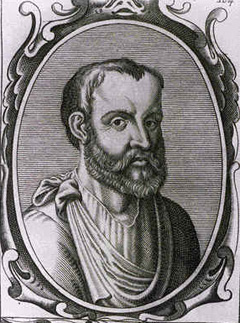| Galen  Born: 129 AD Born: 129 AD
Birthplace: Bergama, Turkey
Died: c. 216 AD
Location of death: Bergama, Turkey
Cause of death: unspecified
Gender: Male
Race or Ethnicity: White
Occupation: Doctor Nationality: Ancient Greece
Executive summary: The medical authority for over 1000 years Galen (or Galenus, called Gallien by Geoffrey Chaucer and other writers of the middle ages), the most celebrated of ancient medical writers, was born at Pergamus, in Mysia, about AD 130. His father Nicon, from whom he received his early education, is described as remarkable both for excellence of natural disposition and for mental culture; his mother, on the other hand, appears to have been a second Xanthippe. In 146 Galen began the study of medicine, and in about his twentieth year he left Pergamus for Smyrna, in order to place himself under the instruction of the anatomist and physician Pelops, and of the peripatetic philosopher Albinus. He subsequently visited other cities, and in 158 returned from Alexandria to Pergamus. A few years later he went for the first time to Rome. There he healed Eudemus, a celebrated peripatetic philosopher, and other persons of distinction; and before long, by his learning and unparalleled success as a physician, earned for himself the titles of "Paradoxologus", the wonder-speaker, and "Paradoxopoeus", the wonder-worker, thereby incurring the jealousy and envy of his fellow practitioners. Leaving Rome in 168, he repaired to his native city, where he was soon sent for to Aquileia, in Venetia, by the emperors Lucius Verus and Marcus Aurelius. In 170 he returned to Rome with the latter, who, on departing from there to conduct the war on the Danube, having with difficulty been persuaded to dispense with his personal attendance, appointed him medical guardian of his son Commodus. In Rome Galen remained for some years, greatly extending his reputation as a physician, and writing some of his most important treatises. It would appear that he eventually left for Pergamus, after spending some time at the island of Lemnos, where he learned the method of preparing a certain popular medicine, the "terra lemnia" or "sigillata." Whether he ever revisited Rome is uncertain, as also are the time and place of his death. According to Su´das, he died at the age of seventy, or in the year 200, in the reign of Septimius Severus. If, however, we are to trust the testimony of Abul-faraj, his death took place in Sicily, when he was in his eightieth year. Galen was one of the most versatile and accomplished writers of his age. He composed, it is said, nearly 500 treatises on various subjects, including logic, ethics and grammar. Of the published works attributed to him, 83 are recognized as genuine, 19 are of doubtful authenticity, 45 are confessedly spurious, 19 are fragments, and 15 are notes on the writings of Hippocrates.
Galen, who in his youth was carefully trained in the Stoic philosophy, was an unusually prolific writer on logic. Of the numerous commentaries and original treatises, a catalogue of which is given in his work De propriis libris, one only has come down to us, the treatise on Fallacies in dictione. Many points of logical theory, however, are discussed in his medical and scientific writings. His name is perhaps best known in the history of logic in connection with the fourth syllogistic figure, the first distinct statement of which was ascribed to him by AverroŰs. There is no evidence from Galen's own works that he did make this addition to the doctrines of syllogism, and the remarkable passage quoted by Minoides Minas from a Greek commentator on the Analytics, referring the fourth figure to Galen, clearly shows that the addition did not, as generally supposed, rest on a new principle, but was merely an amplification or alteration of the indirect moods of the first figure already noted by Theophrastus and the earlier Peripatetics.
Father: Nicon
Lunar Crater Galen (21.9N, 5.0E, 10km dia)
Do you know something we don't?
Submit a correction or make a comment about this profile
Copyright ©2019 Soylent Communications
|